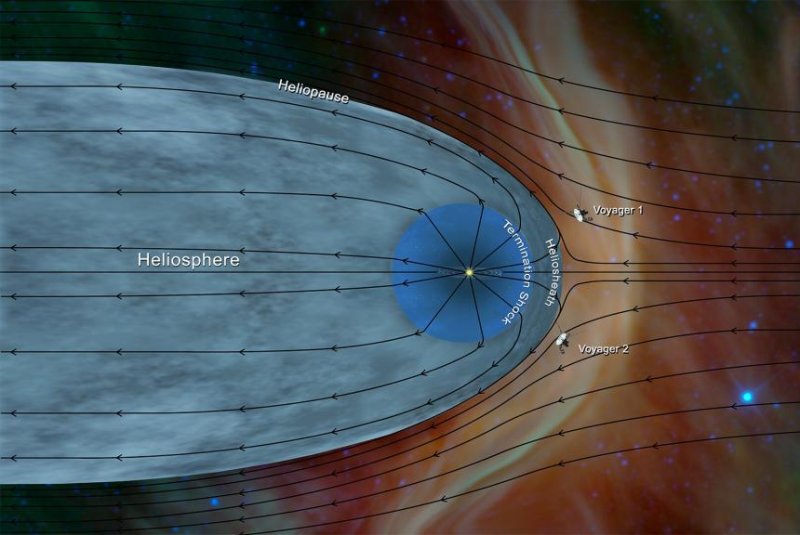Both Voyager probes are now flying through interstellar space. Photo by NASA JPL
Nov. 5 (UPI) -- Voyager 2 has definitely busted through the hydrogen wall at the edge of the solar system.
According to the latest data analysis by scientists at the University of Iowa, the probe left the heliosphere some time ago and has been streaming through interstellar space for the last several months.
The probe's plasma wave instrument recently returned data showing a marked increase in the plasma density, the same jump Voyager 1 experienced when it escaped the influence of the solar winds and entered the interstellar medium, or ISM.
"In a historical sense, the old idea that the solar wind will just be gradually whittled away as you go further into interstellar space is simply not true," Don Gurnett, Iowa physics professor, said in a news release. "We show with Voyager 2 -- and previously with Voyager 1 -- that there's a distinct boundary out there. It's just astonishing how fluids, including plasmas, form boundaries."
Gurnett is the principal investigator for the plasma wave instrument on both Voyager probes.
Scientists estimated that Voyager 2 left the solar system late last year, but the latest findings -- published this week in the journal Nature -- offer confirmation.
Though both spacecraft launched within a few months of each other in 1977, Voyager 1 took a slightly more direct route to the edge of the solar system. The probe has been traveling through interstellar space -- even riding the momentum of interstellar shock waves -- for several years now.
When Voyager 1 broke through the hydrogen wall, the probe was 122.6 astronomical units from the sun. When Voyager 2 entered interstellar space, it was 119.7 AUs from the sun, or more than 11 billion miles from the center of the solar system.
The numbers suggest the contours of the heliosphere's outer wall are mostly uniform.
"It implies that the heliosphere is symmetric, at least at the two points where the Voyager spacecraft crossed," said Bill Kurth, University of Iowa research scientist. "That says that these two points on the surface are almost at the same distance."
Models predicted Voyager 2 would reach the hydrogen wall first, but the latest numbers suggest the wall's thickness varies. Scientists can use the new numbers from Voyager 2 to more accurately model the shape and thickness of the heliosphere's hydrogen wall, where the solar winds run out of momentum and are pushed back by the interstellar medium.
Scientists hope to continue learning new details about interstellar space as the Voyager probes return new measurements.
"The two Voyagers will outlast Earth," Kurth said. "They're in their own orbits around the galaxy for five billion years or longer. And the probability of them running into anything is almost zero."















